AT&T Madison Complex Tandem Office Building
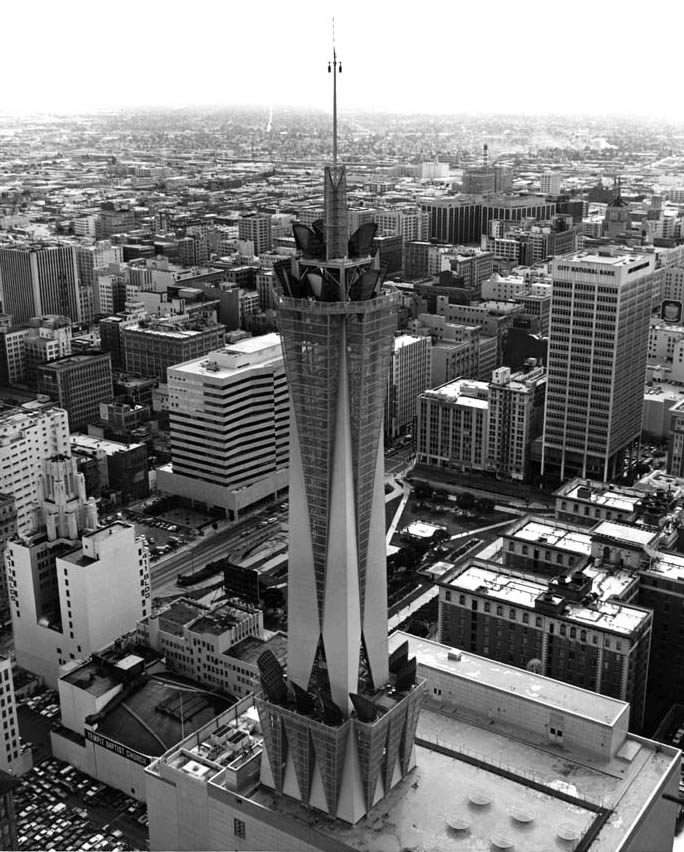 |
|
| (1981)^*# - Aerial view of the microwave tower on top of the Madison Complex in Downtown |
Historical Notes The 17-story AT&T Madison Complex Tandem Office Building is a 259 ft. skyscraper completed in 1961. With its microwave tower, used through 1993, bringing the overall height to 449 ft, it is the 29th tallest building in Los Angeles. The mixed-use building and tower was designed by architects Architects: C. Day Woodford and Leonard Bernard. |
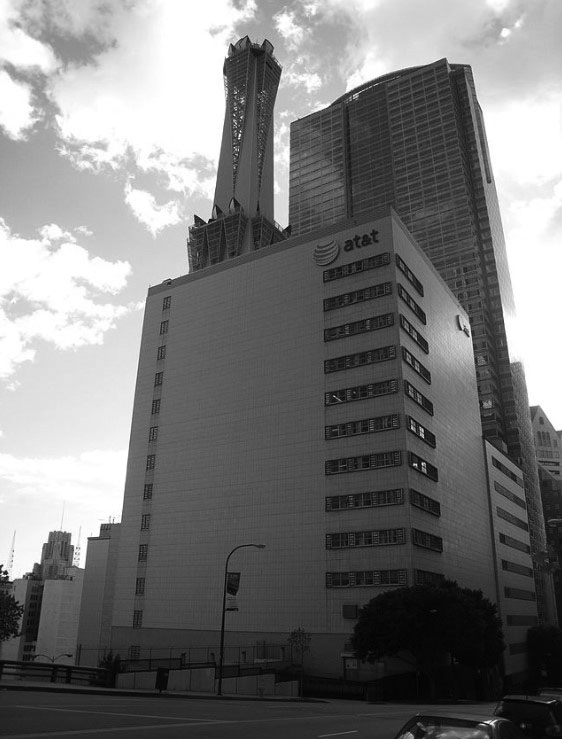 |
|
| (2008)*^ - View looking up at the PacBell Tower (now the AT&T Tower) located at 433 S. Olive Street in downtown Los Angeles. |
Historical Notes The complex is actually made up of three adjoining buildings built during different years as load growth warranted. The original building is long gone but was built on the same site in the 1900s as part of the Home Telephone Company. During 1907 this office had the capacity of 10,000 lines, quite a difference from today. Two new offices were built at the site in 1925, the second office was enlarged in 1945 to allow for load growth. The third office was constructed in 1961 and is 17 stories tall and 449 feet high.^ |
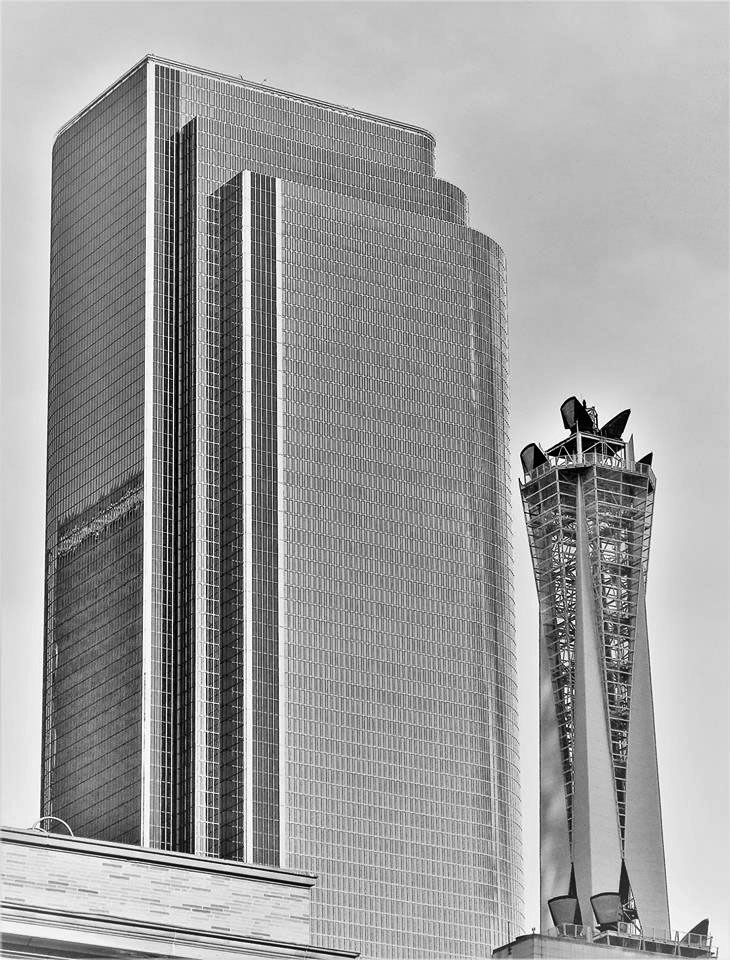 |
|
| (2019)^.^ - View looking up at the AT&T Switching Tower with a much taller One California Plaza behind it. Photo by Howard Gray |
Historical Notes The building's official name is the AT&T Madison Complex Tandem Office but is also known as the AT&T Switching Station. It formerly went by other names including the SBC Tower, the Pacific Bell Tower, and the Pacific Telephone Tower. |
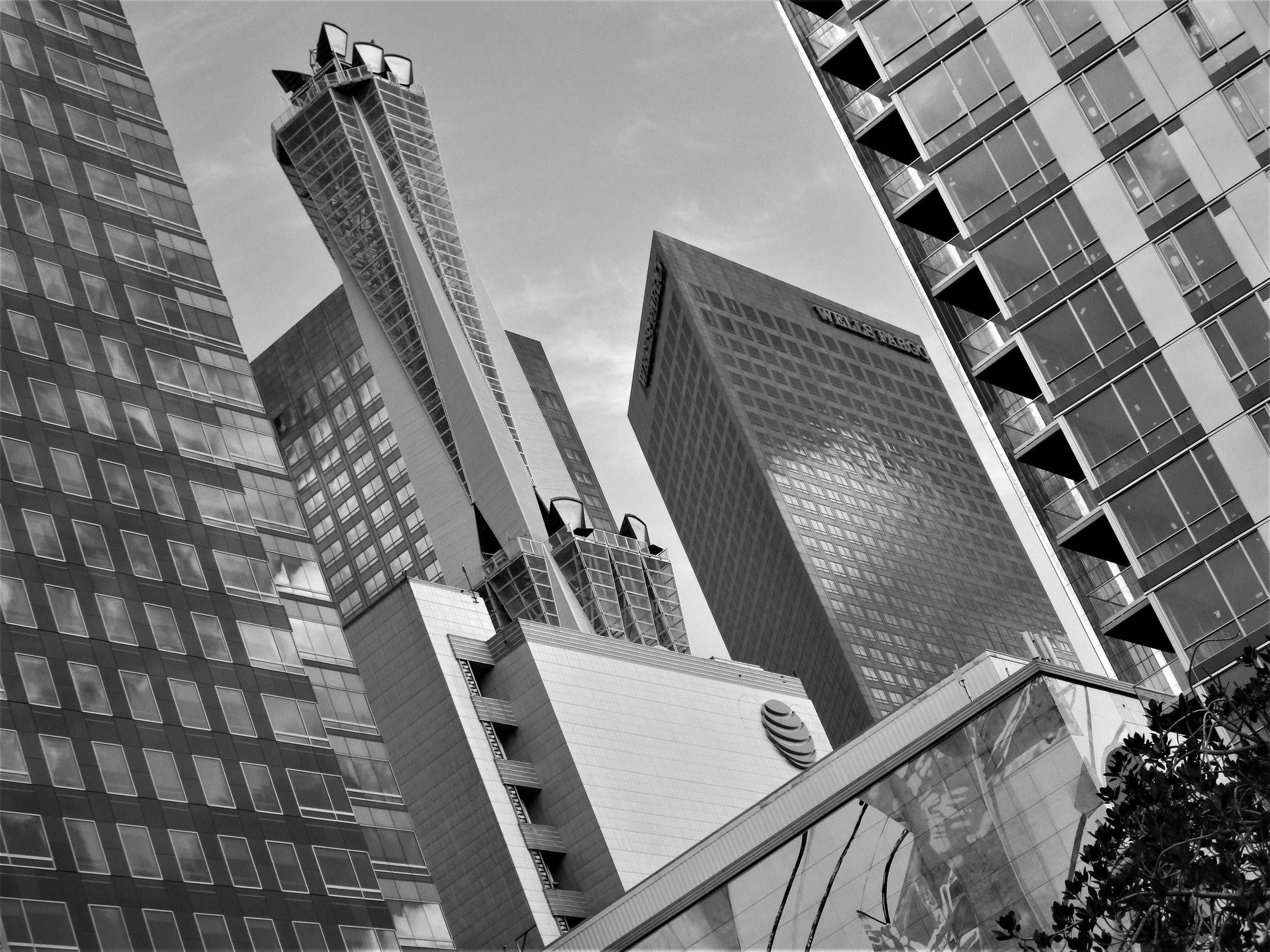 |
|
| (2019)^.^ – View showing the AT&T Switching Tower, once the tallest structure in Los Angeles, surrounded by skyscrapers including the Wells Fargo Building. Photo Courtesy of Howard Gray |
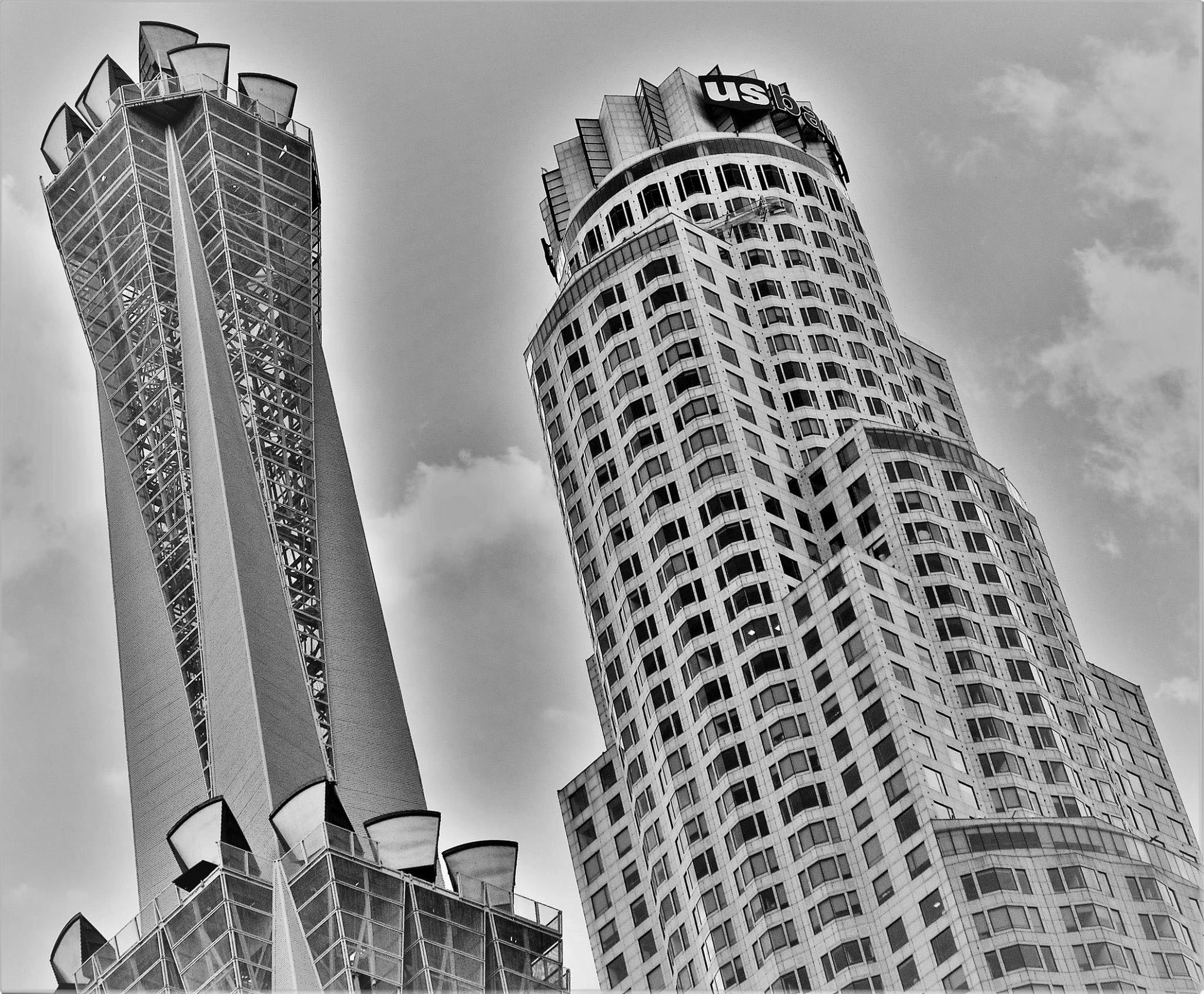 |
|
| (2019)^.^ - AT&T Switching Tower: Opened 1965 (450 feet) /U.S. Bank Tower: Opened 1989 (1,018 feet) - View from 4th & Hill Street. Photo Courtesy of Howard Gray |
Historical Notes With today's World Wide Web and fiber optics, the AT&T tower is a relic that no longer is used in the way it was originally designed. It, however, is one of the better looking and better preserved communications relic that is found in most major cities. Its towers starts off as a solid four-sided rectangle, but gracefully unfolds as it gains height into an eight-sided platform for two levels of microwave horns. A much more complicated version of this architectural origami is performed at the building's roof where the middle of the platform has 52 sides as it transitions from one solid square into a catwalk lattice.* |
`
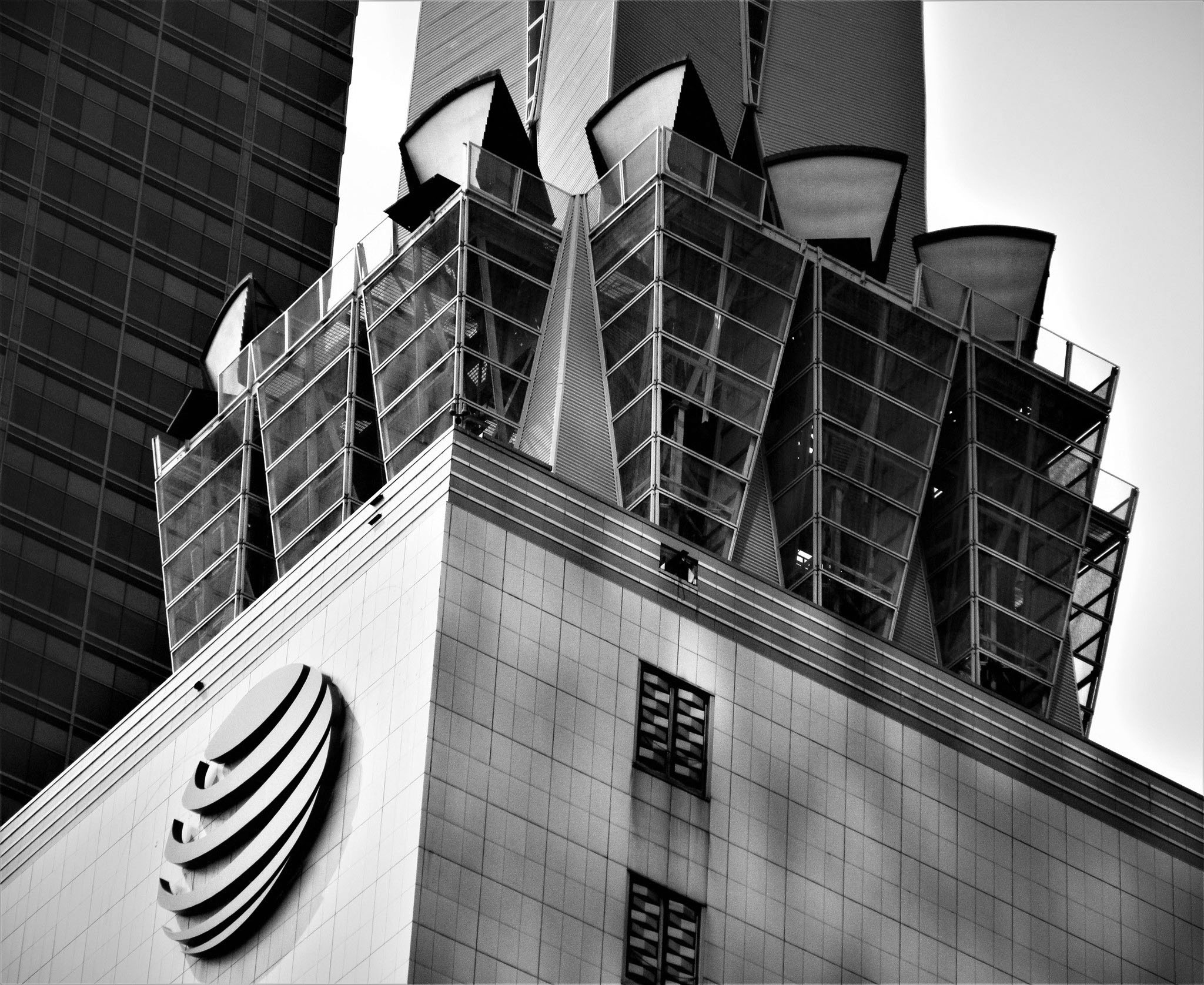 |
|
| (2020)^.^ – Close-up view showing the top of the AT&T Building at the base of the microwave tower. Photo by Howard Gray |
* * * * * |
|
Other Sections of Interest |
|
Water and Power in Early LA |
|
Newest Additions |
New Search Index |

A new SEARCH INDEX has been added to help navigate through the thousands of topics and images found in our collection. Try it out for a test run.
Click HERE for Search Index |
* * * * * |
< Back
Menu
- Home
- Mission
- Museum
- Major Efforts
- Recent Newsletters
- Historical Op Ed Pieces
- Board Officers and Directors
- Mulholland/McCarthy Service Awards
- Positions on Owens Valley and the City of Los Angeles Issues
- Legislative Positions on
Water Issues
- Legislative Positions on
Energy Issues
- Membership
- Contact Us
- Search Index
© Copyright Water and Power Associates
Layout by Rocket Website Templates